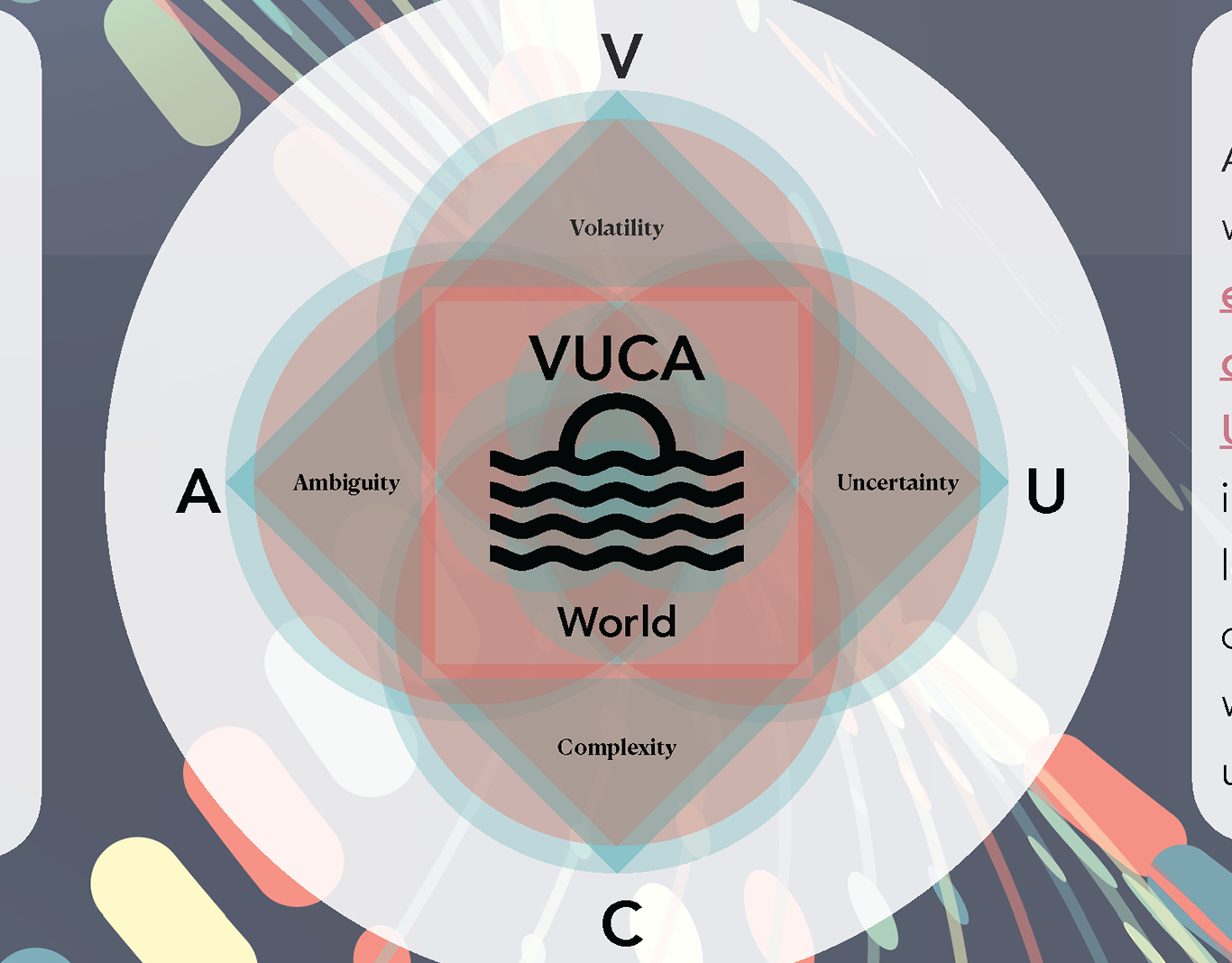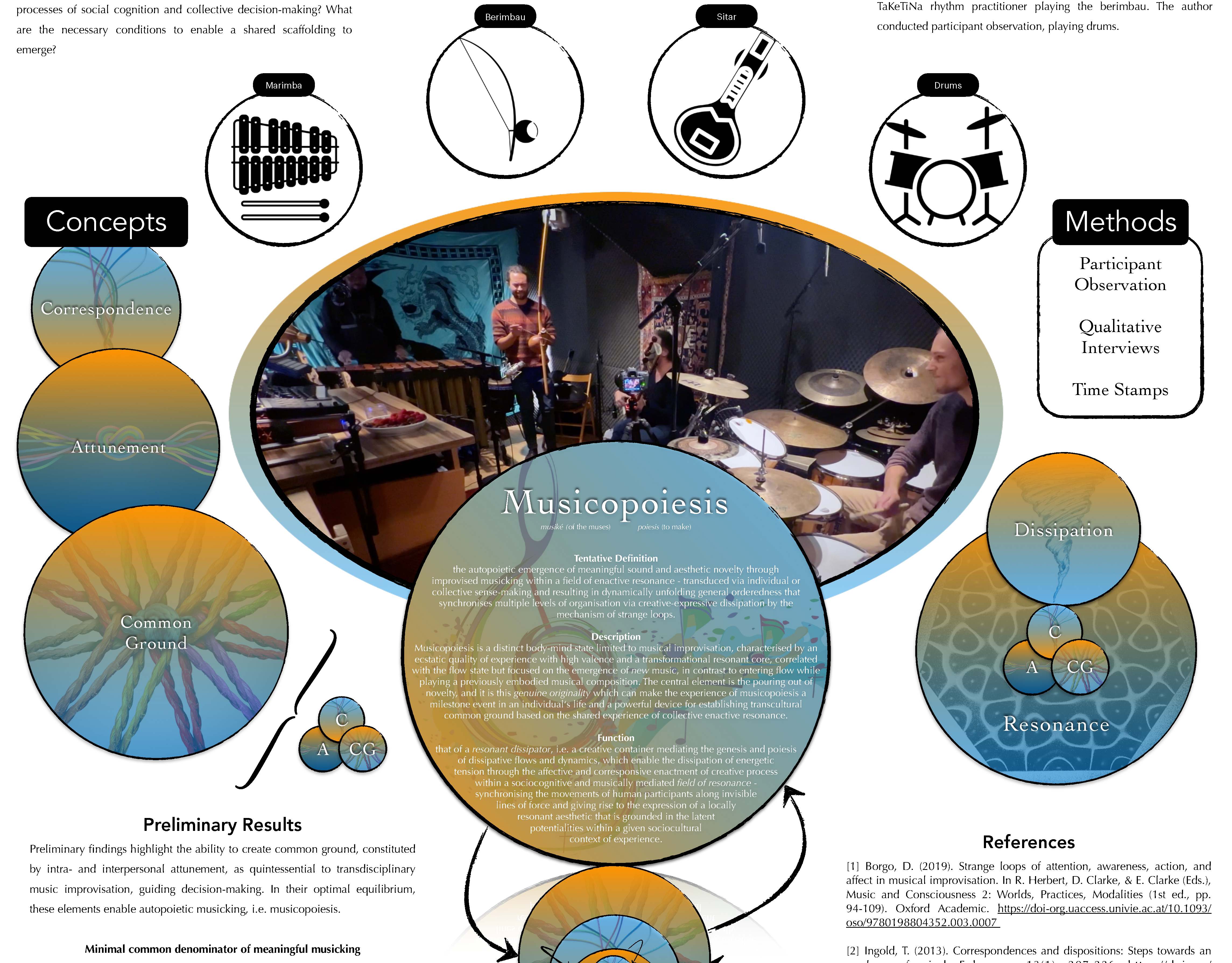Co-Enactive Resonance Loops (CERL)
An Integral Approach to Musicopoiesis
Christophe Novak, University of Vienna
Abstract
Music is fluid architecture in time that profoundly touches the human heart. More than a product to consume or a process to perform, music potentiates transformative experiences and enables harmonization of body and mind. The synesthetic experience of musicking and its intrinsic relation to time make it a potent socio-epistemic technology uniquely suited to exploring creative self-organization. In this thesis, music is explored as a resonance sphere (Rosa, 2019) and a transformative vehicle by examining the phenomenology of musical peak experiences through a broad spectrum of theoretical lenses relevant to cognitive science.
Drawing on embodied experiences from concerts and festivals, I present a rich phenomenology-inspired tapestry of musical peak experiences that invite a closer examination of terminology often taken for granted: What does it mean to be 'in the pocket’, to experience ‘flow’, or to feel the ‘vibe’? What do we refer to when we say that 'it grooves'? What exactly is ‘it’ that flows, grooves, and vibes? These properties point toward a co-agential force beyond the musician's conscious control and suggest a quality of mind that is experienced as both static (a spatial zone) and dynamic (a temporal flow). These phenomenological statements reflect the notion of a topological pocket, describing the first-person experience of a musicking mind enveloped in a whirling island of dynamical stasis. Of particular interest is the phenomenon of musicopoiesis, i.e., the effortless arising of musical meaning ‘by itself’, critically fine-tuned to affordances of the present and enabling resonance with potentials that want to emerge. Musicopoiesis provides a living substrate and ontogenetic ground to experience, explore, and study co-agential world-making, enabling deeper understanding of emergent ecologies of meaning and potentially scale-invariant principles of autopoietic self-organization. The Co-Enactive Resonance Loop (CERL) approach integrates phenomenological and theoretical perspectives to describe the epistemogenetic (Kováč 2016) drive toward self-transparency and knowledge from the inside (Ingold 2021) inherent in the co-agential substrate of a musicopoietic ecosystem.
This thesis explores how music brings forth latent potentials through improvisation, serving as a means to intensify consciousness (Gebser 1985), cultivate a consciousness culture (Metzinger 2024), and facilitate cross-pollination of cognitive science and musical practice. The CERL approach provides a first step toward a co-enactive research program dedicated to the integral study of creative self-organization in musical improvisation.
References
Borgo, D. (2019). Strange loops of attention, awareness, action, and affect in musical improvisation. In R. Herbert, D. Clarke, & E. Clarke (Eds.), Music and Consciousness 2: Worlds, Practices, Modalities (1st ed., pp. 94-109). Oxford Academic. https://doi-org.uaccess.univie.ac.at/10.1093/oso/9780198804352.003.0007
Gebser, J. (1985). The Ever‑Present Origin (N. K. Barstad & A. Mickunas, Trans.). Ohio University Press. (Original work published 1949–1953)
Gómez‑Emilsson, A., & Percy, C. (2023). Don’t forget the boundary problem! How EM field topology can address the overlooked cousin to the binding problem for consciousness. Frontiers in Human Neuroscience, 17, Article 1233119. https://doi.org/10.3389/fnhum.2023.1233119
Hofstadter, D.R. (2007). I am a strange loop. Basic Books.
Ingold, T. 2000/2011. The Perception of the Environment. Essays on Livelihood, Dwelling and Skill. Routledge
Ingold, T. (2021). Imagining for real: Essays on creation, attention and correspondence. Routledge.
Kováč, L. (2016). Life’s arrow: the Epistemic Singularity. EMBO Reports, 17(8), 1083–1084. https://doi.org/10.15252/embr.201642902
Levin, M. (2019). The computational boundary of a “Self”: Developmental bioelectricity drives multicellularity and scale‑free cognition. Frontiers in Psychology, 10, Article 2688. https://doi.org/10.3389/fpsyg.2019.02688
Metzinger, T. (2024). The Elephant and the Blind. MIT Press.
Rietveld, E., Denys, D., & van Westen, M. (2018). Ecological-enactive cognition as engaging with a field of relevant affordances: The Skilled Intentionality Framework (SIF). In A. Newen, L. de Bruin, & S. Gallagher (Eds.), The Oxford handbook of 4E cognition (pp. 41–70). Oxford University Press. https://doi.org/10.1093/oxfordhb/9780198735410.013.3
Rosa, H. (2019). Resonance: A sociology of our relationship to the world (J. C. Wagner, Trans.). Polity Press. (Original work published 2016)
Varela, F. J., Thompson, E., & Rosch, E. (2017). The embodied mind: Cognitive science and human experience (Rev. ed.). MIT Press. https://doi.org/10.7551/mitpress/9780262529365.001.0001
Poster



